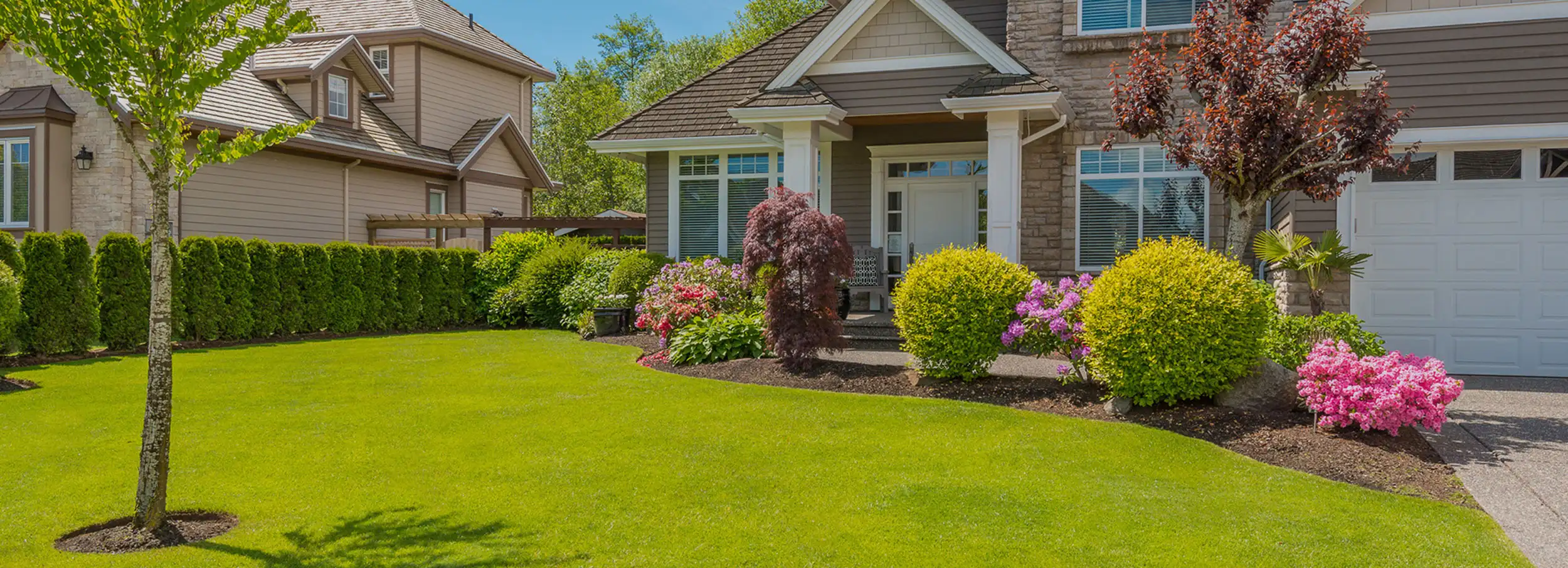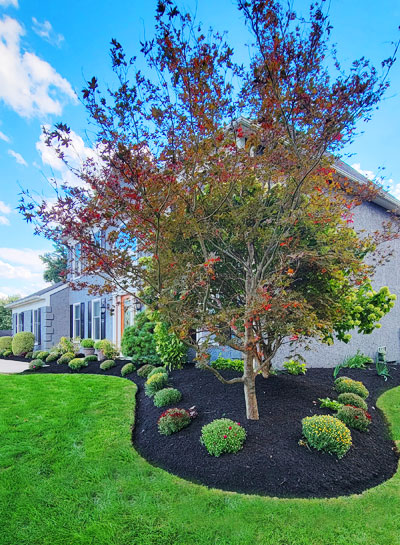Elevate Your Building's Visual With Sustainable Landscaping Layouts and Eco-Friendly Practices
:max_bytes(150000):strip_icc()/2583801_toddd_49-1-bc209c65ca1a4917afe2f2cbc437027c.jpg)
Advantages of Lasting Landscape Design
Applying sustainable landscaping practices not only conserves natural deposits yet also promotes biodiversity and enhances overall ecological wellness. By selecting environment-friendly landscape design strategies, homeowner can enjoy a wide variety of benefits that prolong past just aesthetic allure. One substantial advantage is the reduction of water intake via the usage of drought-resistant plants, rain gardens, and reliable watering systems. This not only decreases utility bills yet likewise contributes to water preservation initiatives in the community.
Moreover, sustainable landscape design can improve dirt health by lessening using chemical fertilizers and chemicals, thus producing a much healthier environment for plant development and useful dirt organisms. This, subsequently, improves the total resilience of the landscape to hold up against environmental stress factors and climate modification influences - bush removal Jacksonville. Furthermore, lasting landscape design practices can draw in varied wildlife, consisting of pollinators like and butterflies, fostering a more lively and well balanced ecological community within the residential property
Incorporating Indigenous Plants
To build on the benefits of sustainable landscape design, a strategic focus on incorporating native plants can better enhance ecological resilience and advertise biodiversity within the landscape. Indigenous plants are varieties that normally occur in a specific area and have developed to flourish in the local climate, dirt conditions, and environment. By consisting of native plants in landscaping designs, residential or commercial property owners can reduce water usage, decrease the demand for chemical pesticides and plant foods, and support the local wild animals populace.
Including indigenous plants additionally assists in preserving the unique personality and identification of an area's vegetation. These plants usually call for less maintenance as soon as established, making them a sustainable and cost-effective landscape design option over time. Additionally, indigenous plants can bring in indigenous pollinators like bees and butterflies, contributing to the overall wellness of the community.
When selecting native plants for landscaping jobs, it is necessary to select types that are well-suited to the details ecological problems of the site. Consulting with neighborhood nurseries or agricultural gardens can offer valuable advice on picking the appropriate native plants for a certain location. By integrating indigenous plants into landscape design designs, home proprietors can create lovely, sustainable exterior spaces that benefit both the setting and the community.

Water Preservation Methods
Effective irrigation approaches play a critical duty in lasting landscaping practices, ensuring optimum water preservation efforts in outdoor spaces. Applying methods such as drip irrigation, rain harvesting, and clever irrigation systems can considerably decrease water wastage while keeping a healthy landscape. Drip irrigation delivers water straight to the roots of plants, decreasing dissipation and runoff. Rain gathering involves gathering rainwater from roof coverings and saving it for later use in watering, minimizing the reliance on local water sources. Smart watering systems utilize weather information and soil wetness levels to change watering routines, avoiding overwatering and advertising water effectiveness.
In addition to advanced watering methods, xeriscaping is one more water-saving landscape you could check here design technique that focuses on making use of drought-resistant plants, mulch, and her response efficient irrigation to develop a low-water landscape design - bush removal Jacksonville. By selecting indigenous plants that are fit to the local climate and dirt problems, homeowner can lower the need for excessive watering, ultimately conserving water and advertising a sustainable outdoor atmosphere
Eco-Friendly Hardscaping Concepts
Enhancing outside rooms with environmentally friendly hardscaping features can contribute considerably to lasting landscape design techniques. When considering hardscaping elements, select materials like recovered wood, recycled concrete, or natural rock to minimize environmental impact. These products not just include a special aesthetic attract your outdoor space yet also reduce the demand for brand-new sources extraction.
Carrying out permeable paving options such as gravel or absorptive concrete can aid minimize water overflow and promote groundwater recharge. These alternatives permit rain to permeate right into the ground, avoiding erosion and minimizing the concern on stormwater systems.
Incorporating indigenous plants right into hardscaping designs can even more enhance eco-friendliness by sustaining regional wildlife and decreasing the demand for extreme watering or chemical treatments. By including vertical yards or eco-friendly wall surfaces, you can introduce extra greenery right into metropolitan setups, improving air top quality and biodiversity.
Integrating energy-efficient lights, such as solar-powered LEDs, into hardscaping layouts can reduce power usage and lower your residential or commercial property's carbon impact. Prioritizing eco-friendly hardscaping ideas not just enhances the appeal of your exterior space however additionally demonstrates a dedication to ecological stewardship.
Maintenance Tips for Sustainable Landscapes

On a regular basis prune plants to advertise healthy and balanced growth and protect against overgrowth that can result in pest illness or problems. Usage organic plant foods to nurture the soil and plants without dangerous chemicals that can seep into the atmosphere. For hardscaping components, such as absorptive pavers or rock pathways, consistently tidy them to protect against particles buildup and preserve their capability. By staying aggressive with maintenance tasks, you can protect the appeal and sustainability of your landscape for years to come.
Verdict
In verdict, lasting landscape design techniques offer various benefits for homeowner, from enhancing the aesthetic appeal of the surroundings to advertising ecological conservation. By integrating native plants, executing water conservation techniques, and utilizing environmentally friendly hardscaping ideas, homeowner can create beautiful landscapes that are also eco liable. With correct maintenance, sustainable landscapes can thrive and add to a much healthier ecological community for both human beings and wildlife.
Additionally, sustainable landscape design can enhance dirt wellness by lessening the use of chemical fertilizers and chemicals, consequently creating a much healthier setting for plant growth and valuable dirt organisms.To construct upon the benefits of sustainable landscaping, a strategic emphasis on incorporating native plants can further boost environmental strength and advertise biodiversity within the landscape. By including indigenous plants in landscaping layouts, home owners can reduce water use, lessen the need for chemical pesticides and plant foods, and support the regional wildlife population.
These plants usually require much less maintenance once established, making them a lasting and economical landscape design solution in the lengthy run. By incorporating native plants into landscape design designs, property owners can develop beautiful, sustainable exterior areas that profit both the environment and the neighborhood.